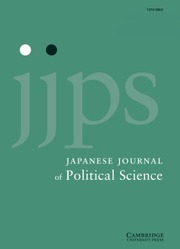No CrossRef data available.
Article contents
The effects of district magnitude on the number of intra-party factions: the case of Colombia, 1958–1990
Published online by Cambridge University Press: 01 October 2024
Abstract
The study of party systems tends to focus on individual parties and overlooks factions and other sub-party units. Although the impact of the district magnitude on the number of electoral parties is well established, the electoral rules incentives on party subunits have been overlooked. Using electoral results at the district level, we assess the effect of the district magnitude on the effective number of parties and effective number of factions competing in elections and with legislative seats in Colombia (1958–1990). By focusing on parties and factions, we produce empirical evidence from 444 datapoints to support the claim made elsewhere that roots of multi-partism were present throughout the period studied, including under the National Front (1958–1970), where only two parties were permitted. The district magnitude impacts the number of parties and the number of party subunits, but its effect is stronger on the former. When the National Front came to an end and electoral rules were modified in the 1970s, there was an increase in party factionalism and new parties in the years before multiparty system rules were enshrined in the 1991 constitution.
- Type
- Research Article
- Information
- Copyright
- Copyright © The Author(s), 2024. Published by Cambridge University Press


